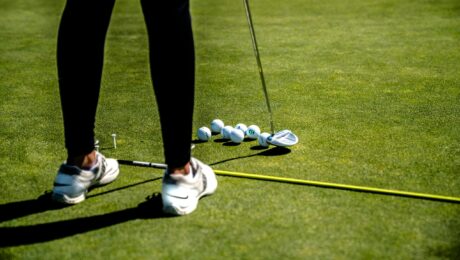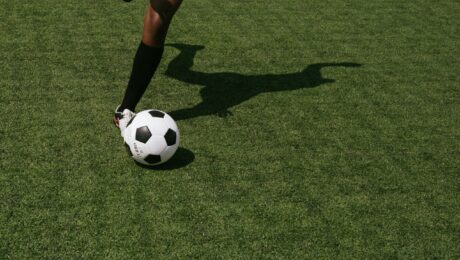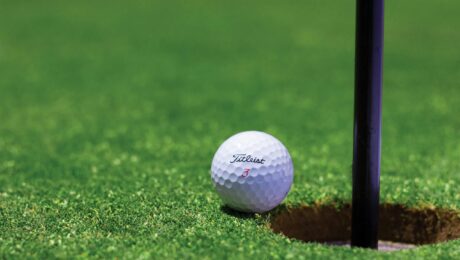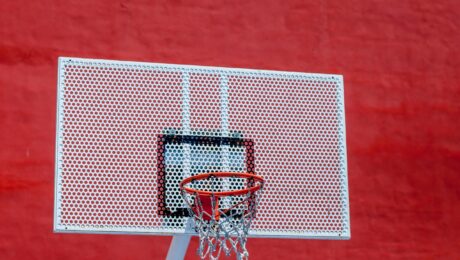Sporting Gear Technology: The Latest Innovations You Should Know About
Sporting gear technology has made leaps and bounds in recent years, ushering in an era where performance and protection are elevated to unprecedented levels. From wearable sensors that track athletic performance in real time to high-tech materials that adapt to environmental conditions, today’s innovations are transforming the sports landscape, making it safer, smarter, and more customized than ever.
One of the most exciting developments in sports technology is the rise of smart wearables and biometric gear. Today’s wearable technology goes far beyond simple fitness tracking, integrating sophisticated sensors that monitor metrics like heart rate, muscle activation, speed, and even impact force. These devices don’t just deliver numbers; they provide valuable insights into technique, endurance, and recovery needs. For instance, advanced running shoes now come equipped with embedded sensors that analyze an athlete’s stride, cadence, and pressure distribution. This information is invaluable in refining running form, reducing the risk of injury, and improving overall performance. Beyond individual gains, these wearables can also help coaches and trainers develop more tailored training programs, maximizing potential while minimizing the risks that come with overtraining.
Safety is another area where sports technology has achieved groundbreaking advances. With materials like D3O®, which remains flexible under normal conditions but hardens instantly upon impact, protective gear has become both more effective and less cumbersome. From helmets to gloves, this material provides excellent impact absorption, allowing athletes to engage in high-risk sports with greater confidence. Helmets, in particular, have seen significant improvements in design and function. Advanced impact-protection systems, such as MIPS (Multi-directional Impact Protection System), are engineered to reduce rotational forces on the brain, which occur during angled impacts. These designs add an extra layer of protection for sports like football, hockey, and cycling, reducing the risk of concussions and making sports safer for players at all levels.
Customization has also become a defining feature of modern sports gear. With 3D printing, equipment can now be tailored to meet an athlete’s exact specifications, enhancing comfort and performance. This technology allows manufacturers to create custom-fitted helmets, insoles, and even bike frames, all designed to conform precisely to an athlete’s body. The result is a significant boost in both comfort and effectiveness. By providing support that’s unique to the wearer, these customized items can prevent discomfort, reduce strain, and optimize performance, allowing athletes to fully focus on their game without worrying about fit or support issues. This degree of customization has been especially revolutionary in endurance sports, where fit and comfort play a major role in performance and injury prevention.
The fabrics used in athletic clothing have also evolved dramatically, with new materials designed to regulate temperature, resist bacteria, and wick away moisture. Some high-performance clothing now includes climate-adaptive materials that adjust to an athlete’s body temperature and the surrounding environment. For instance, a jacket might have fibers that open up to allow airflow when it’s hot and contract to retain warmth when temperatures drop. In addition to climate control, these fabrics often incorporate antimicrobial properties, reducing bacterial buildup and keeping clothes fresher longer. This shift means that athletes can focus on performance without being hindered by sweat or discomfort, and it adds convenience by reducing the need for frequent washing and odor control.
Training, too, has been transformed by technology with the integration of virtual reality (VR) and augmented reality (AR). These immersive tools allow athletes to practice and visualize plays in simulated environments that feel incredibly real. In sports like football, VR headsets enable players to run through various game scenarios, improving their spatial awareness and reaction times without the physical demands of on-field training. AR also plays a significant role in technique enhancement; for example, an AR-equipped golf club can display swing metrics directly in the athlete’s field of vision, providing instant feedback that can be used to make real-time adjustments. This type of immersive technology not only refines skills but also strengthens mental focus and decision-making, attributes that are crucial for high-stakes competition.
Another recent breakthrough is the development of self-healing materials. Used in items such as bike tires and wetsuits, these materials repair minor cuts or punctures automatically, preventing the damage from worsening and extending the life of the equipment. Self-healing polymers can respond to heat or pressure, closing up small tears that would otherwise require repairs or replacements. This innovation is particularly beneficial for outdoor sports, where gear is often exposed to rough conditions. It’s a cost-effective solution that keeps equipment in peak condition and minimizes disruptions to training or competition.
Artificial intelligence (AI) has also made a significant impact, offering athletes data-driven insights that go beyond traditional metrics. AI-powered tools can analyze gameplay footage, assess biomechanics, and provide tailored feedback, allowing athletes to make precise adjustments in their technique. For instance, in basketball, AI can evaluate shooting form down to the smallest details—arm angle, foot placement, release timing—highlighting areas for improvement that even experienced coaches might miss. Beyond the individual, AI is transforming team sports, where predictive analytics can be used to strategize against opponents, identifying patterns and making it easier to exploit weaknesses.
Today’s sporting gear also benefits from high-strength, lightweight materials like carbon fiber and graphene, which enhance durability without adding bulk. This is especially advantageous in sports where speed and precision are paramount. From carbon-fiber bicycle frames that maximize agility to graphene-infused tennis rackets that improve responsiveness, these materials allow athletes to push boundaries with gear that feels like an extension of themselves.
The rapid advancements in sporting gear technology underscore how deeply innovation is woven into the fabric of sports today. These technologies are not just about creating better equipment—they’re about pushing the limits of human potential, enabling athletes to perform safer, smarter, and at levels previously thought unattainable.
- Published in Uncategorized
How to Clean and Care for Your Sporting Gear
Properly cleaning and caring for your sporting gear extends its life, maintains its performance, and ensures your equipment stays safe and hygienic. Here’s a guide to keep your gear in great shape.
1. Clean Your Gear Regularly
Regular cleaning is essential for any type of sporting equipment. For helmets, gloves, and protective pads, start by wiping down the exterior with a mild soap and water solution to remove dirt, sweat, and grime. For items with fabric liners, like helmets and pads, remove liners if possible and hand wash or machine wash them, following manufacturer instructions. Avoid using harsh chemicals or bleach, as they can weaken materials over time.
Footwear, in particular, benefits from consistent cleaning. After each use, remove dirt and mud with a soft brush and wipe down surfaces with a damp cloth. Insoles can be taken out and washed to prevent odor buildup. Avoid machine washing shoes, as it can weaken glue and stitching; instead, clean them by hand and air dry in a well-ventilated area.
2. Disinfect and Deodorize
Sweat and bacteria can lead to odors and even damage the gear if left untreated. To disinfect items like gloves, pads, and shoes, use a sports gear-specific disinfectant spray or a gentle vinegar-water solution. Spray lightly after each use to prevent bacteria buildup. For deodorizing, sprinkle baking soda inside shoes or helmets and let it sit for a few hours before shaking it out.
For helmets and protective pads, some people use UV light sanitizers to kill bacteria. These are quick and effective ways to keep gear fresh between uses without adding moisture that could harm materials.
3. Dry Your Gear Properly
Moisture from sweat, cleaning, or rainy conditions can lead to mold and mildew, degrading the materials. After each use and cleaning, make sure to air-dry gear in a well-ventilated area. Avoid direct sunlight or high heat, as intense heat can damage plastics, foams, and fabrics. For helmets and pads, consider using a fan to speed up drying without adding heat.
Hanging items up is also an effective drying method, especially for large items like wetsuits and jerseys. Using a specialized drying rack can help air circulate around each item, ensuring thorough drying.
4. Store Gear Properly
Proper storage prevents damage and keeps your gear organized and ready for use. For example, keep helmets, pads, and gloves in a ventilated sports bag or on an open shelf rather than closed bags, where air circulation is limited. Store items in a cool, dry place, away from extreme temperatures or humidity. Using gear racks or hooks can help prevent items from becoming crushed or misshapen.
For items like shoes, avoid stacking them or storing them where they can get crushed, as this can weaken their structure over time. If possible, insert shoe trees or stuff them with paper towels to maintain their shape.
5. Inspect Regularly for Wear and Tear
Over time, even the best-cared-for equipment will show signs of wear and tear. Regularly inspect your gear for any damage, loose stitching, or cracks. For items like helmets, any cracks or compromised foam indicate it’s time for a replacement, as damaged helmets won’t offer full protection. Similarly, inspect shoes for worn-out soles, as they lose their grip and support when heavily worn.
Make small repairs as soon as you notice issues to prevent them from worsening. For example, resew loose stitching on gloves or patch small tears on protective gear. Larger issues, however, may require replacement, especially when it comes to safety equipment.
6. Follow Manufacturer Instructions
Each piece of equipment may have specific cleaning and care instructions from the manufacturer. Following these guidelines helps you avoid damaging materials and ensures your gear lasts as long as possible. Many companies have their care instructions online, so check their websites if you’re unsure about a specific product.
By establishing a routine for cleaning, drying, storing, and inspecting your sporting gear, you can significantly extend its lifespan and maintain its performance. Well-cared-for equipment not only helps you play at your best but also protects you and those around you during play.
- Published in Uncategorized
Safety Gear: The Essential Items Every Athlete Needs
Safety gear is essential for athletes of all skill levels, as it helps protect against injuries and enables safer performance in sports and physical activities. Here’s a rundown of the most critical safety items every athlete should have.
First, helmets are a fundamental piece of safety equipment across various sports. Helmets are designed to protect the head from impact, reducing the risk of concussions and more serious brain injuries. Whether cycling, skateboarding, skiing, or playing contact sports, choosing a helmet specifically suited to the activity is essential. Look for helmets that are certified to meet safety standards and fit securely without shifting during movement. A proper fit and the right certification can make all the difference in protecting against injury.
Protective pads are also crucial, particularly for sports that involve high speeds, physical contact, or hard surfaces. Knee and elbow pads are commonly used in sports like skateboarding, rollerblading, and basketball, providing a buffer that absorbs impact and reduces abrasions. Wrist guards are also essential for sports that pose a risk of falling, as they help stabilize the wrist and prevent fractures. Pads should fit snugly without restricting movement, ensuring they stay in place during activity while providing maximum protection.
Mouthguards are indispensable for any sport that involves physical contact, like football, hockey, martial arts, and basketball. Mouthguards cushion the impact to the face, protecting teeth and reducing the risk of jaw injuries and concussions. Many athletes prefer custom-fitted mouthguards that offer the best protection and comfort, though there are also high-quality boil-and-bite models that mold to the shape of the teeth. Regularly check your mouthguard for wear, as damaged guards may not provide adequate protection.
Athletes should also consider eye protection to shield against flying objects, debris, or direct impact. Protective eyewear, such as goggles or face shields, is crucial in sports like racquetball, baseball, and hockey. Eyewear made from impact-resistant materials like polycarbonate offers durability and clear visibility while protecting against potential eye injuries. For outdoor sports, UV-protective lenses also help shield the eyes from harmful sun exposure, reducing long-term vision risks.
Lastly, proper footwear is an often overlooked but vital piece of safety equipment. Different sports require specific types of shoes designed to provide the right traction, support, and cushioning. Running shoes, for instance, are designed to absorb impact and reduce strain on joints, while cleats offer traction on grass or turf, reducing the risk of slipping in sports like soccer or football. Wearing the right footwear can improve stability, prevent slips and falls, and reduce the risk of overuse injuries, which are common in high-impact sports.
In summary, helmets, protective pads, mouthguards, eye protection, and sport-specific footwear are essential safety items that no athlete should overlook. Investing in quality gear that fits well and meets safety standards can greatly reduce the risk of injury, allowing athletes to focus on their performance with confidence and peace of mind.
- Published in Uncategorized
The Best Multi-Purpose Sporting Goods for Outdoor Enthusiasts
For outdoor enthusiasts, multi-purpose sporting goods offer an ideal way to simplify their gear, maximize functionality, and remain prepared for a wide range of activities. Here’s a closer look at some of the best multi-functional items that make a great addition to any adventurer’s kit.
One essential piece of gear for outdoor enthusiasts is a high-quality multi-tool. Modern multi-tools offer an array of features—pliers, knives, screwdrivers, can openers, and even small saws—all compacted into a single, easy-to-carry item. These tools come in handy for a range of outdoor situations, from setting up camp and making quick repairs to handling emergency situations. With lightweight designs and durable materials, they’re built to withstand rugged environments, making them a must-have for camping, hiking, and other outdoor adventures.
Another versatile item is a waterproof and insulated jacket. Look for jackets designed to adjust to changing weather conditions. Some models come with detachable liners and breathable, waterproof outer shells, allowing you to adapt to cold, wet, or mild conditions with just one jacket. A good jacket should be lightweight enough for summer nights yet warm enough for winter hikes, making it a great choice for those who love exploring all year round.
A collapsible water bottle is also an invaluable multi-purpose tool for outdoor enthusiasts. Not only does it help you stay hydrated, but collapsible bottles are compact and easy to store when empty, saving space in your pack. Many collapsible bottles are made from durable, BPA-free silicone that withstands frequent use. Some even come with built-in filtration systems, enabling you to safely drink from natural water sources—perfect for long hikes or camping trips in remote locations.
Multi-purpose tents are also highly versatile, with designs that allow for use in various conditions. Some models feature modular designs, with detachable components like rain flies, mesh layers, and additional vestibules for extra space. These tents can be configured for different weather conditions, providing ventilation for warm summer nights or full coverage in rainy weather. For campers who want one tent for multiple environments, a modular tent offers a great mix of flexibility, comfort, and durability.
Finally, consider a convertible backpack that can adapt to various outdoor needs. Many convertible backpacks can shift from a large-capacity hiking pack to a smaller daypack by detaching sections or folding in compartments. Some feature waterproof materials, built-in hydration systems, and adjustable straps, making them suitable for long hikes or quick day trips. This adaptability allows you to bring just one pack that can serve you in different ways depending on the nature of your adventure.
With multi-functional sporting goods like these, outdoor enthusiasts can simplify their gear, stay organized, and remain prepared for whatever nature throws their way. Investing in quality, versatile items lets you focus more on the journey and less on packing, making your outdoor experiences all the more enjoyable.
- Published in Uncategorized
How to Choose the Right Sporting Goods for Kids
Choosing the right sporting goods for kids involves balancing safety, quality, and the child’s unique interests and abilities. Here are some key points to guide you in selecting equipment that supports a child’s physical development, ensures safety, and fuels their enthusiasm for sports.
First, safety should always be your top priority. Children are more prone to injuries as they’re still growing and may not have developed the skills to handle advanced equipment. Look for gear that offers protective features suited to the child’s age and skill level, such as helmets, knee pads, and padded equipment. Ensure the gear meets safety standards by checking for certifications or seals of approval from relevant sports safety organizations.
Quality is another essential factor. Investing in well-made sporting goods can prevent breakage and potential accidents while also saving you money in the long run. High-quality materials not only enhance durability but also ensure better performance. While it’s tempting to go for cheaper options, remember that kids can be tough on equipment, and lower-quality gear may not hold up over time.
Next, consider the right size and fit. Sporting goods come in a range of sizes, and having the correct fit can make a big difference in both comfort and control. For example, shoes, gloves, or rackets that are too large can be difficult for kids to manage and might even lead to injuries. Many stores offer guidance on sizes specific to each sport, so take advantage of sizing charts and fitting advice when selecting gear. If you’re unsure, some stores allow kids to test out equipment to find the best fit.
The child’s individual interests and physical abilities should also be central in your decision-making. Different sports have varying demands, and each child may have unique preferences. Observing what interests your child naturally gravitates toward or encouraging them to try multiple activities can help them find a sport they love. This enthusiasm is often the best predictor of success and commitment, as kids who enjoy their sport are more likely to stay engaged and active.
Lastly, think about versatility. Kids often outgrow their gear quickly, so it can be helpful to look for adjustable or multi-functional equipment. Adjustable gear, such as helmets with adaptable straps or hockey sticks with expandable lengths, can accommodate growth and reduce the need for frequent replacements. Similarly, multi-purpose equipment can allow kids to try multiple activities without needing to purchase gear for each one.
By focusing on safety, quality, proper fit, interest alignment, and versatility, you can ensure that you’re providing kids with the right sporting goods to thrive and enjoy their athletic pursuits.
- Published in Uncategorized
Top 5 Accessories to Improve Your Game
Whether you’re a seasoned player or just beginning to embrace the sport, having the right gear can be a game-changer. Accessories tailored for your game not only add a layer of convenience but can also significantly enhance your performance. Here are some top accessories that can boost your game and elevate your playing experience.
To start, consider how performance aids play a pivotal role. With advances in technology, performance-enhancing tools have become accessible and practical for players at all skill levels. From tools designed to improve your grip and stance to devices that track progress in real-time, there’s an accessory for every need. These tools provide instant feedback, helping you adjust your game on the fly and make continuous improvements.
Comfort is another critical element to pay attention to, as it directly impacts focus and stamina. Comfortable grips, custom-fitted gloves, and high-quality footwear tailored to your sport can make a world of difference. For instance, investing in ergonomic gear can alleviate strain and prevent fatigue, allowing you to play longer and at a higher level of intensity. Comfortable gear keeps distractions at bay, letting you immerse fully in the game.
Training and practice tools have also become essential, especially with the availability of portable gear. Training aids that simulate real game conditions help you practice effectively even outside of official games. Whether you’re working on precision or agility, there’s likely a tool designed to improve a specific skill. The beauty of modern training tools lies in their versatility and portability; they’re easy to set up, use, and store, making consistent practice more manageable than ever.
Finally, accessories that enhance visibility and focus are invaluable. Lighting accessories, anti-glare eyewear, and custom shades can shield your vision from harsh light, enabling you to stay sharp and responsive throughout the game. Good lighting and proper visibility prevent you from missing important details in the game environment, such as changes in the trajectory of a ball or the movements of other players.
By integrating these types of accessories into your regular routine, you can improve your game on all fronts—performance, comfort, training, and focus.
- Published in Uncategorized
Eco-Friendly Sports Equipment: The Best Sustainable Gear of 2024
As sustainability becomes a growing concern worldwide, the sports industry is stepping up to meet the demand for eco-friendly alternatives. Athletes and fitness enthusiasts are increasingly looking for equipment that not only enhances performance but also minimizes environmental impact. In 2024, sustainable sports gear is making significant strides, with brands innovating through eco-friendly materials, ethical production processes, and long-lasting design. Here’s a look at the best sustainable sports equipment of 2024, showcasing how the industry is evolving toward greener practices.
One of the most exciting developments in eco-friendly sports equipment is the rise of sustainable running shoes. Leading the way are brands that use recycled materials and plant-based alternatives in their designs. For instance, shoes made from recycled ocean plastic, like Adidas’ Parley series, have gained popularity among runners who want high-performance footwear with minimal environmental impact. These shoes are designed to be durable while reducing plastic waste in the oceans. Similarly, Allbirds has created running shoes using natural materials like eucalyptus tree fibers and sugarcane-based soles, offering a breathable, lightweight option that’s gentler on the planet.
In addition to running shoes, sportswear companies are focusing on producing eco-friendly clothing made from recycled and sustainable fabrics. Patagonia, a pioneer in sustainable outdoor gear, continues to lead the charge with its commitment to using recycled polyester and organic cotton. Its line of activewear, including base layers and outerwear, offers durability, performance, and comfort, all while minimizing its environmental footprint. Brands like Girlfriend Collective are also making waves with activewear made from recycled plastic bottles, offering stylish and functional gear for yoga, running, and training sessions. These eco-conscious options not only perform well but also help reduce the fashion industry’s dependence on virgin plastics and other non-renewable materials.
For cyclists, sustainable gear is becoming a key part of the ride. One standout in 2024 is the rise of bicycles made from bamboo—a renewable resource that grows quickly and requires fewer pesticides than traditional materials like aluminum or steel. Bamboo bicycles are lightweight, strong, and biodegradable, offering an excellent alternative for eco-minded cyclists. Brands like Booomers and Bamboo Bicycle Club are leading the way, combining craftsmanship and sustainability to create bikes that reduce environmental impact without compromising on performance.
Water sports enthusiasts are also seeing a shift toward sustainability with the development of eco-friendly surfboards, paddleboards, and wetsuits. Traditionally, surfboards are made from non-biodegradable materials like polyurethane and fiberglass, which can be harmful to marine ecosystems. In 2024, however, several brands are offering alternatives. Firewire Surfboards, for example, is producing boards made from recycled foam cores and sustainably sourced wood veneers, reducing the carbon footprint of surfboard production. Additionally, brands like Patagonia and Yulex have created wetsuits using natural rubber from responsibly managed forests, offering high-performance gear that keeps surfers warm without relying on neoprene, a petroleum-based material.
In team sports, brands are embracing sustainable options in everything from soccer balls to protective gear. Fairtrade soccer balls, made from eco-friendly rubber and ethically sourced materials, are becoming more common, offering players durable, high-quality equipment that supports fair labor practices. Companies like Senda Athletics are leading this movement, creating balls that are environmentally friendly and socially responsible. Likewise, protective gear such as shin guards and helmets are now being made with recycled or biodegradable materials, reducing the amount of waste produced by sports gear manufacturing.
Yoga and fitness enthusiasts are also benefiting from the rise of eco-friendly mats and accessories. Yoga mats made from natural rubber, cork, or jute are gaining popularity as a sustainable alternative to traditional PVC mats, which can take years to break down in landfills. Brands like Manduka and Liforme offer mats made from biodegradable and non-toxic materials that provide excellent grip and support during practice, while being kinder to the planet. Eco-friendly accessories such as cork yoga blocks and straps made from organic cotton are also available, ensuring a fully sustainable yoga practice.
One of the most significant shifts in 2024 is the increased focus on circularity in sports equipment design. More companies are embracing the concept of the circular economy, where products are designed to be reused, repaired, or recycled at the end of their life cycle. For example, Nike has introduced a shoe recycling program where old sneakers are collected and repurposed into new products, reducing waste and giving used gear a second life. Similarly, brands like REI offer repair services for outdoor gear, encouraging customers to extend the life of their products instead of discarding them.
As sustainability becomes a central concern in sports equipment manufacturing, transparency and certification are gaining importance as well. Look for gear that carries certifications such as Bluesign (for textiles and materials that meet strict environmental standards), Fair Trade (which ensures ethical labor practices), or FSC (for sustainably sourced wood). These certifications provide assurance that the products you’re using have been made with both people and the planet in mind.
In conclusion, 2024 marks an exciting year for eco-friendly sports equipment, with innovative products and practices making it easier than ever for athletes to make sustainable choices. Whether you’re a runner, cyclist, surfer, or yogi, there are now high-performance, environmentally conscious alternatives for almost every sport. By choosing gear made from recycled materials, natural fibers, and renewable resources, athletes can reduce their environmental impact while still excelling in their chosen sports. As the industry continues to evolve, expect to see even more sustainable innovations that help protect the planet and promote responsible consumption in the world of sports.
- Published in Uncategorized
Sporting Goods Maintenance: How to Extend the Life of Your Gear
Investing in quality sporting goods is an important step for any athlete or fitness enthusiast, but taking care of your gear is just as crucial for ensuring its longevity and performance. Whether it’s your favorite running shoes, a well-worn tennis racket, or a trusty set of golf clubs, properly maintaining your equipment can save you money and keep you performing at your best. Here’s how you can extend the life of your sporting goods and keep them in top condition for years to come.
The first step in prolonging the life of your gear is regular cleaning. Sports equipment is often exposed to dirt, sweat, and environmental elements, which can break down materials over time. For example, running shoes or hiking boots that are repeatedly exposed to mud or water will wear out much faster if not cleaned properly. After each use, wipe down your gear with a damp cloth to remove debris. For shoes, consider using a soft brush to clean the soles and outsoles, and allow them to air dry naturally. Avoid placing them in direct heat, as this can cause materials like leather or synthetic fabrics to crack or warp.
For more technical equipment like rackets, clubs, or bikes, consistent cleaning also plays a vital role. Tennis rackets, for instance, benefit from regular wiping of the strings and frame to remove sweat and dirt buildup, which can weaken the strings and affect performance. Golf clubs should be cleaned with a soft brush and water to remove dirt from the grooves of the clubface, which can impact your swing if left unattended. If you cycle, make sure to clean your bike chain and lubricate it regularly to avoid rust and keep it functioning smoothly.
Storage is another critical factor in maintaining the life of your sporting goods. Improper storage can lead to premature wear and tear, particularly when gear is exposed to extreme temperatures, moisture, or direct sunlight. Many types of equipment are made from materials that degrade when left in hot or humid conditions. To prevent this, always store your gear in a cool, dry place. Shoes, for example, should be stored away from direct sunlight, as UV rays can damage the synthetic materials and cause them to break down faster.
Proper storage also means keeping your gear organized. When sporting goods are tossed carelessly into a closet or left in the trunk of a car, they can easily become damaged. To avoid this, consider investing in storage solutions like shoe racks, sports bags, or equipment shelves. Items like soccer balls or basketballs should be stored inflated to maintain their shape, while helmets, rackets, and other gear should be hung or placed carefully to prevent unnecessary pressure or deformation.
Another often-overlooked aspect of sporting goods maintenance is paying attention to wear and tear. Many athletes continue to use gear long after it’s past its prime, which not only reduces performance but also increases the risk of injury. Regularly inspect your equipment for signs of damage. For shoes, check the soles for excessive wear, as well as the cushioning and structure for signs of collapse. If your shoes are worn out, they can lose their ability to absorb impact, leading to discomfort or injury. Replace them when you notice significant wear in the treads or if the shoes no longer feel supportive.
With items like tennis rackets or baseball gloves, pay attention to how the materials are holding up. Strings on rackets loosen over time and need to be restrung periodically for optimal performance. Leather gloves benefit from regular conditioning to prevent cracking and to maintain their flexibility. Using a leather conditioner or oil keeps them soft and durable, which is particularly important for catcher’s mitts or other gear that sees heavy use.
Maintenance extends beyond cleaning and storage to include proper use. Misuse or overuse of equipment can drastically shorten its lifespan. For instance, using running shoes for activities they aren’t designed for—such as weightlifting or playing court sports—can cause them to wear out more quickly. Each piece of sporting equipment is designed for specific activities, and using them outside of those activities can lead to damage or reduced effectiveness.
Sports equipment like bikes or skis require regular tune-ups or professional maintenance to keep them in top condition. For cyclists, this means regular bike checks, including tire pressure, brake alignment, and chain lubrication. Skiers should wax their skis regularly to maintain glide and control, and get their bindings checked to ensure they are safe. If you play a sport that requires more specialized gear, it’s worth investing in professional services to keep your equipment in working order.
Taking care of your equipment also means using it with care. Avoid exposing your gear to unnecessary stress. For example, don’t store heavy objects on top of your basketballs or soccer balls, as this can deform their shape. Similarly, avoid over-tightening straps on helmets or over-bending a fishing rod, as this can cause the materials to weaken or break.
Finally, consider the environmental conditions in which you use your gear. Running shoes, for example, can wear out much faster when consistently used on rough or uneven terrain. If you’re a runner who spends a lot of time on trails or rocky paths, consider alternating between trail running shoes and regular running shoes to reduce wear. Similarly, equipment like bikes or outdoor gear should be used according to the weather conditions to avoid unnecessary damage.
In conclusion, maintaining your sporting goods doesn’t have to be time-consuming or complicated. With a few simple habits—cleaning after each use, proper storage, regular inspections, and mindful usage—you can significantly extend the life of your equipment. Not only will this save you money in the long run, but it will also enhance your performance and ensure that your gear is always in peak condition when you need it most.
- Published in Uncategorized
The Evolution of Sporting Equipment: Then vs. Now
Sporting equipment has come a long way from its humble beginnings. As sports have evolved over centuries, so too has the technology and design of the gear used to play them. From the early days of rudimentary wooden sticks and leather balls to today’s sleek, high-tech gear, the evolution of sporting equipment tells a fascinating story of innovation and human ingenuity. This transformation not only reflects changes in materials and technology but also the growing emphasis on performance, safety, and sustainability. Let’s take a look at how far sporting equipment has come, and how modern advancements have reshaped the way we play.
In the early days of many sports, equipment was often handmade from natural materials. Balls were typically made of leather or animal hides stuffed with wool or feathers, while bats, sticks, and paddles were carved from wood. These items, while functional, lacked the precision, durability, and performance-enhancing qualities we take for granted today. For example, in the early days of baseball, players used unrefined, heavy wooden bats that were prone to breaking and had little consistency in their design. Similarly, tennis rackets were once made of solid wood, resulting in a much heavier and less responsive tool compared to today’s lightweight models.
Fast forward to today, and sporting equipment is designed with a blend of science and technology that has transformed the way athletes play and perform. The materials used have advanced dramatically, with innovations like carbon fiber, synthetic polymers, and composites replacing wood, leather, and metal in many sports. These modern materials are not only lighter and more durable, but they also offer more flexibility and strength, allowing for better control and enhanced performance. Take tennis rackets, for example. Modern rackets are made from graphite and other advanced materials that offer improved strength-to-weight ratios, giving players more power and control over their shots. Similarly, baseball bats are now made from high-tech aluminum alloys or composite materials that allow for greater power, precision, and durability.
Another key area where sporting equipment has evolved significantly is in footwear. Early athletic shoes were little more than leather boots or canvas sneakers with thin rubber soles. While they offered some protection, they lacked the comfort, support, and cushioning needed for high-performance athletics. Today’s athletic shoes are engineered with specialized cushioning systems, lightweight synthetic fabrics, and cutting-edge design features tailored to specific sports. Running shoes, for instance, now incorporate responsive midsoles that absorb impact and propel runners forward, while basketball shoes are designed with ankle support and enhanced grip for quick lateral movements. The rise of smart shoes, equipped with sensors to track performance data, represents the latest evolution, merging footwear with wearable technology.
Safety has also become a central concern in the design of modern sporting equipment. In the past, protective gear was rudimentary at best. Early football helmets, for example, were made of leather and provided minimal protection against head injuries. Similarly, hockey players often went without helmets altogether, leaving them vulnerable to serious injuries. Today, safety standards are much higher across all sports. Modern helmets are engineered with impact-resistant materials like polycarbonate, along with interior padding systems designed to absorb and distribute force. In sports like football, sensors are now being integrated into helmets to monitor impact and assess potential concussions in real-time.
The evolution of sporting equipment has also been driven by advances in data collection and analysis. Sports science has become a key player in developing equipment that not only improves performance but also reduces the risk of injury. High-tech gadgets and wearables now allow athletes to track everything from heart rate and running speed to swing angles and stride lengths. This data-driven approach has influenced the way equipment is designed, allowing manufacturers to fine-tune their products to meet the precise needs of athletes. For instance, golf clubs are now meticulously crafted using data on swing mechanics, allowing players to choose clubs that optimize their individual playing styles. In cycling, bikes have become aerodynamic marvels, with frames made from carbon fiber and advanced wind-tunnel testing ensuring that riders experience minimal drag.
Even in team sports, the evolution of equipment has led to tactical advantages. Soccer balls, for example, have undergone a transformation in terms of materials and construction. Early versions of the ball were often inconsistent in shape and weight, making it difficult to predict how they would move in the air. Modern soccer balls are designed with precision stitching, advanced materials, and perfectly symmetrical shapes to ensure a consistent flight path, allowing players to perform with greater accuracy. In basketball, the introduction of synthetic leather and composite materials has enhanced grip and control, while improvements in manufacturing processes ensure that each ball performs uniformly.
The role of sustainability has also come to the forefront in recent years, influencing the way sporting equipment is made. As environmental concerns grow, many manufacturers are looking for ways to reduce their ecological footprint. This has led to the development of eco-friendly materials, such as recycled plastics, biodegradable components, and sustainably sourced natural fibers. In surfing, for example, eco-friendly boards made from plant-based resins and recycled materials are becoming more popular. Similarly, brands are experimenting with sustainable alternatives for producing running shoes, reducing waste, and utilizing renewable resources.
While the evolution of sporting equipment has clearly advanced athletes’ abilities and improved safety, it has also made sports more accessible to a wider range of people. Customization options now allow athletes to find gear tailored to their specific needs, whether it’s a running shoe designed for high arches or a tennis racket perfectly balanced for a beginner. The combination of cutting-edge technology, improved materials, and a deeper understanding of biomechanics means that today’s athletes—amateur or professional—are better equipped than ever to perform at their best.
In conclusion, the evolution of sporting equipment from its early days to the present demonstrates the remarkable ways in which science and technology have transformed the world of sports. What was once simple and rudimentary is now sophisticated and specialized, designed to enhance performance, protect athletes, and push the boundaries of human potential. As technology continues to advance, it’s exciting to imagine where the next innovations in sporting equipment will take us.
- Published in Uncategorized
How to Choose the Perfect Running Shoes: A Comprehensive Guide
Running is one of the most accessible and rewarding forms of exercise, but choosing the right running shoes can make all the difference in your experience. For beginners and seasoned runners alike, the perfect pair of shoes is essential not only for comfort but also for preventing injury and improving performance. With so many brands, designs, and features on the market, it’s easy to feel overwhelmed. This comprehensive guide will walk you through everything you need to consider when selecting the perfect running shoes.
One of the first things to understand is that no single shoe is perfect for every runner. Your choice should depend on several factors, including your foot type, running style, and the surfaces you run on. Before you even begin looking at specific brands or models, it’s important to assess your feet. Start by determining your arch type—whether you have flat feet, neutral arches, or high arches. This can be done through a simple “wet test,” where you wet your feet and step on a piece of paper to see the shape of your footprint. The shape of your arch influences how your foot moves when it hits the ground, a motion known as pronation.
Pronation plays a significant role in selecting running shoes. If you overpronate (your foot rolls inward excessively), you’ll need shoes that provide extra support to prevent injury. On the other hand, underpronators (those whose feet roll outward) need shoes with more cushioning to absorb shock. Runners with neutral pronation have the luxury of choosing from a wider range of shoes but still benefit from understanding their specific needs in terms of cushioning and support.
Another critical aspect of finding the perfect running shoes is understanding the type of running you’ll be doing. The shoes you wear for a marathon may not be the best for trail running or quick sprints around the neighborhood. If you’re a road runner, shoes with a durable outsole that offers traction on hard surfaces will be essential. For trail runners, shoes with extra grip and protection from rough terrain are important. Additionally, lightweight shoes designed for speed work are different from those needed for longer, slower runs that require more cushioning.
Comfort is the next big factor to consider when choosing running shoes. Running is a repetitive motion, and even a minor discomfort can lead to blisters, aches, or injuries over time. When trying on shoes, pay attention to how they feel the moment you put them on. There should be enough room in the toe box to allow your toes to wiggle, and you should feel a snug, supportive fit around the midfoot and heel. The key is to find a shoe that hugs your foot securely without feeling tight or restrictive.
Keep in mind that your feet tend to swell during a run, so it’s often recommended to choose shoes that are about half a size larger than your normal shoes. This gives your feet room to expand comfortably without pressing against the sides of the shoe. Always try on running shoes toward the end of the day, as your feet naturally swell after being active.
Cushioning is another key element in finding the perfect running shoes, but how much cushioning you need depends on your personal preferences and the type of running you plan to do. Some runners prefer shoes with lots of cushioning to absorb impact, especially if they have joint concerns or plan to run long distances on hard surfaces. However, others prefer a more minimalistic design that allows them to feel more connected to the ground. The trend toward “barefoot” or minimalist running shoes reflects this preference, with the goal being to promote a more natural stride and foot movement. However, minimalist shoes may not be suitable for everyone, particularly beginners, as they require a period of adaptation to avoid injury.
The materials used in the shoe’s upper and midsole also play a role in both comfort and performance. Look for breathable fabrics that allow air to circulate, keeping your feet cool and dry. Synthetic materials and mesh are popular choices for this reason. The midsole, which provides cushioning and stability, should offer the right balance between support and responsiveness. Runners who prefer a softer, more cushioned ride may opt for shoes with thicker midsoles, while those looking for speed and agility may prefer a firmer, more responsive midsole.
Durability is another consideration when investing in running shoes. The amount of wear and tear your shoes will endure depends on factors like your weight, running style, and the type of surfaces you run on. Most running shoes are designed to last between 300 and 500 miles, but heavier runners or those who run on rough terrain may find their shoes wear out more quickly. Regularly inspecting your shoes for signs of wear—such as a worn-out tread or compressed cushioning—will help you determine when it’s time for a replacement.
It’s also worth considering the type of lacing system a shoe uses. While it may seem like a small detail, the lacing system plays a role in ensuring a snug, customized fit. Some shoes offer more advanced lacing systems that distribute pressure evenly across the foot, preventing hot spots or discomfort.
Finally, don’t overlook the importance of trying on different pairs and brands before making your decision. Every shoe brand has its own design philosophy, and what works for one runner may not work for another. It’s helpful to visit a specialized running store where knowledgeable staff can assess your gait and recommend options based on your foot type and running goals. Don’t be afraid to test the shoes in-store, running a few strides to get a feel for how they perform.
In conclusion, choosing the perfect running shoes is a highly individual process that requires careful consideration of your foot type, running style, comfort preferences, and the surfaces you run on. The right shoes can enhance your performance, reduce your risk of injury, and make running a more enjoyable and sustainable part of your life. By taking the time to find a pair that meets your specific needs, you’ll set yourself up for success, whether you’re running your first mile or training for a marathon.
- Published in Uncategorized











